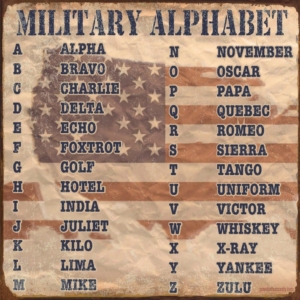You probably already know the military has its own alphabet used to communicate with each other over radios and other devices. This alphabet is also called the NATO phonetic alphabet and was created for service members to improve communication with one another.
The earliest version of the military alphabet was created during World War I. It allowed pilots to communicate with ground control, but due to frequent poor signals and a lot of radio interference, flight associations began to use code words that represented letters that were easily confused.
In 1941, the military introduced a standard spelling language that was used in every branch of the military. The United States Army and Navy came together to create the Joint Army/Navy Phonetic Alphabet, also known as the “Able Baker Charlie” alphabet. In 1957, the military and NATO both adopted the alphabet after years of research and testing. Initially, this alphabet was confidential, but was later released to the public. The military alphabet grew popular over time and is still used within the U.S. military today.
Many civilians also use the military alphabet when needing to spell words made up of similar sounding letter, like B, P, C, and E. We can thank the U.S. Military for creating an asset used in our daily lives.

